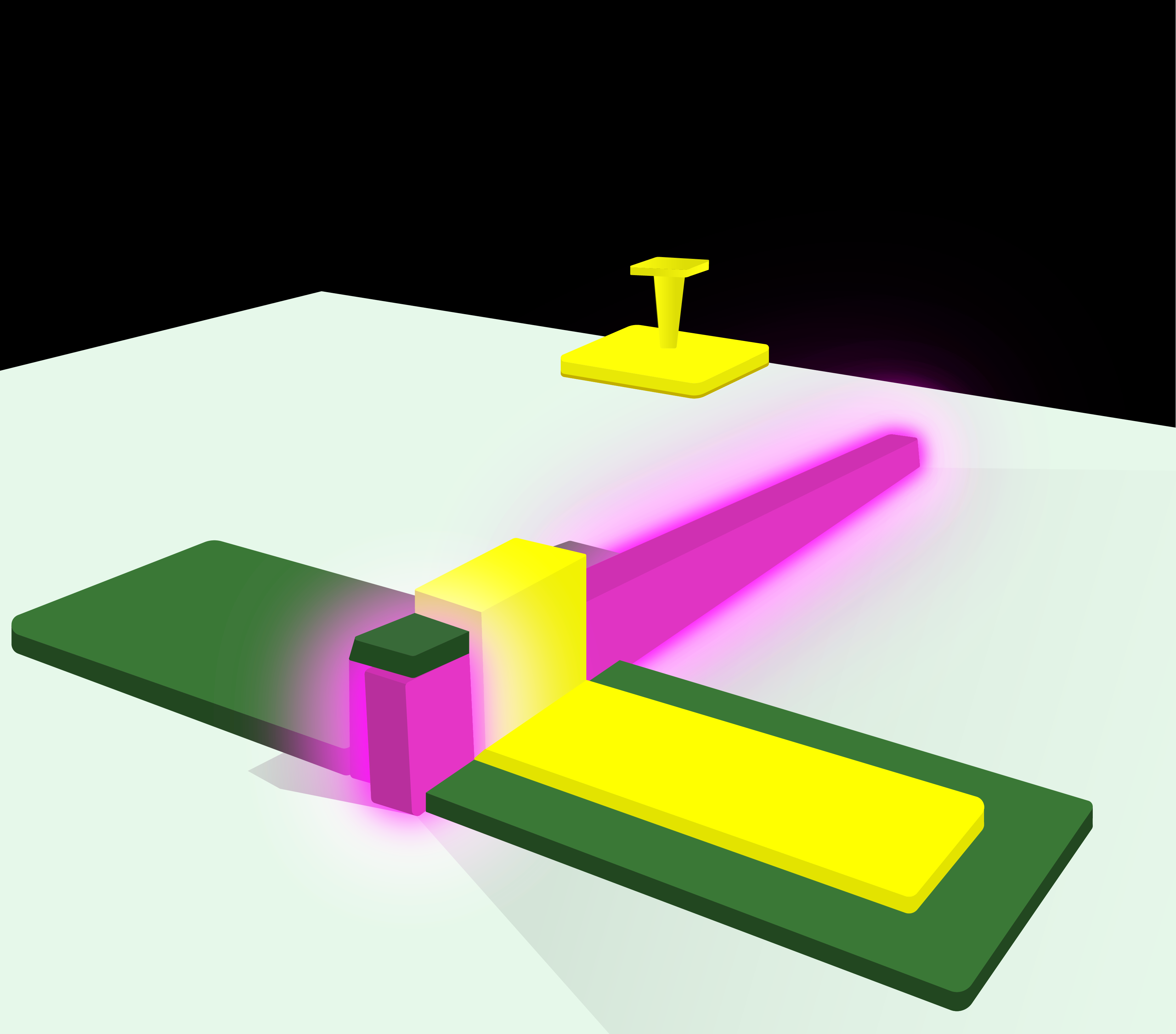The fin LED pixel design includes the glowing zinc oxide fin (purple), isolating dielectric material (green), and metal contact (yellow atop green). The microscopic fins, which the research team arranged into comb-like arrays, show an increase in brightness of 100 to 1,000 times over conventional submicron-sized LED designs.
Credit: B. Nikoobakht, N. Hanacek/NIST
Topics: Light-Emitting Diode, Nanotechnology, Solid-State Physics
A new design for light-emitting diodes (LEDs) developed by a team including scientists at the National Institute of Standards and Technology (NIST) may hold the key to overcoming a long-standing limitation in the light sources’ efficiency. The concept, demonstrated with microscopic LEDs in the lab, achieves a dramatic increase in brightness as well as the ability to create laser light — all characteristics that could make it valuable in a range of large-scale and miniaturized applications.
The team, which also includes scientists from the University of Maryland, Rensselaer Polytechnic Institute, and the IBM Thomas J. Watson Research Center, detailed its work in a paper published today in the peer-reviewed journal Science Advances. Their device shows an increase in brightness of 100 to 1,000 times over conventional tiny, submicron-sized LED designs.
A Light Bright and Tiny: NIST Scientists Build a Better Nanoscale LED
B. Nikoobakht, R.P. Hansen, Y. Zong, A. Agrawal, M. Shur and J. Tersoff. High-brightness lasing at submicrometer enabled by droop-free fin light-emitting diodes (LEDs). Science Advances. August 14, 2020. DOI: 10.1126/sciadv.aba4346

Comments